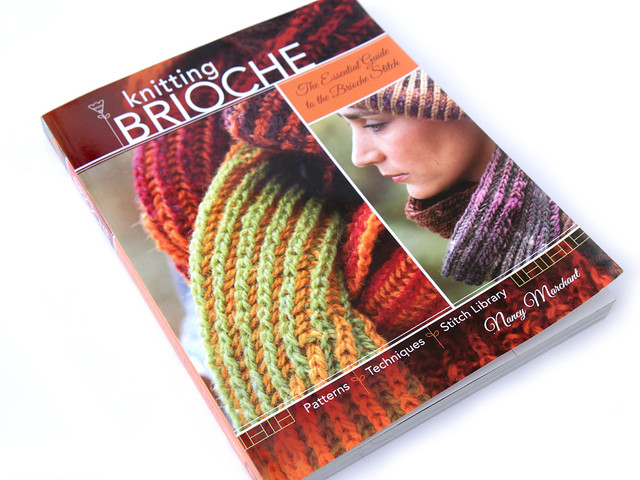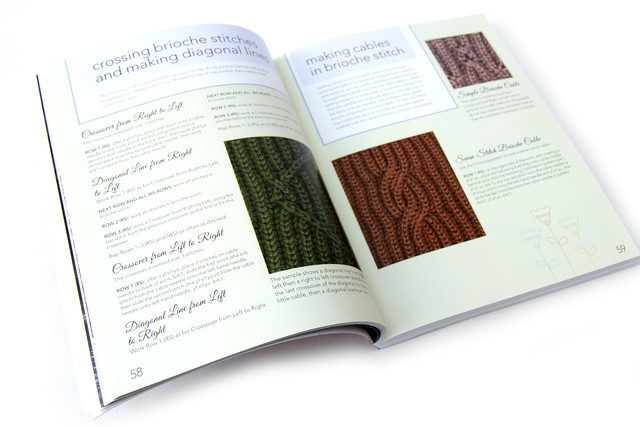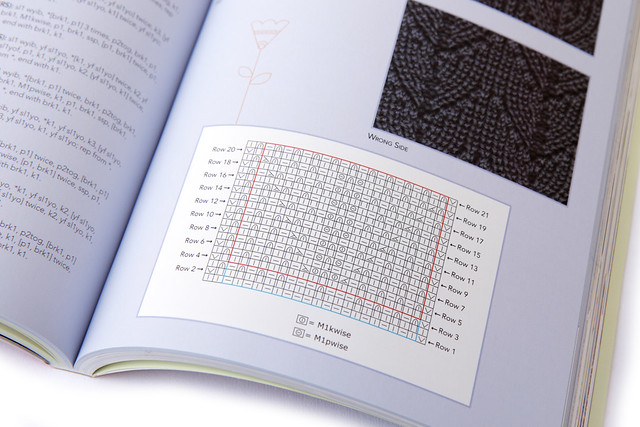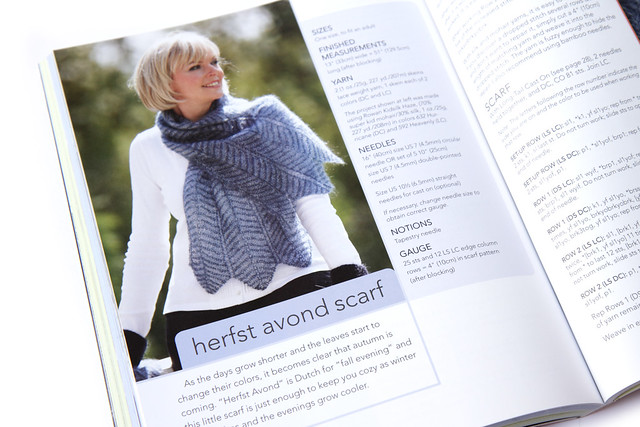Brioche knitting was for me, for a long time was a mysterious and intimidating beast, with its own set of unfamiliar abbreviations and mythical qualities – a wide rib pattern that’s – stretchy yet stable, airy yet substantial and often spotted on commercial garments.
Even after I bought a copy of Nancy Marchant’s Knitting Brioche: The Essential Guide to the Brioche Stitch Technique it sat on the shelf for some time before I picked it up in earnest and endeavoured to finally get my head around Brioche knitting.
Knitting Brioche is an incredibly thorough and thoughtfully produced guide, and delving into it reveals that Brioche is so much more than just a stitch, it’s a whole new world of knitting. Everything you know about knitting – from simple shaping to colour work and cabling – has an equivalent in Brioche.
The book is divided into four sections, the first of which begins by explaining the structure of brioche and its variants (including Fisherman’s Rib), the basic stitches, casting on and off, two colour brioche, increasing and decreasing in pattern, cables and other patterns. A knitting friend of mine described the biggest challenge of Brioche knitting to be keeping the edge (or selvedge) stitches neat. Thankfully, the author provides several approaches to managing selvedge for Brioche knitting.
The second chapter is a stitch dictionary containing more brioche-related patterns than you ever thought possible.
Each stitch has clear photos of both sides, written explanation, written row instructions and charted instructions.
Section three discusses incorporating Brioche elements into projects and your own knitwear design.

Guidance on combining Brioche stitch with other stitches as a design element; illustration showing how the stitch and row gauge compares with moss stitch, ribbing and linen stitch.
The final section contains 25 patterns, which explore a variety of Brioche techniques and effects, including ingenious use of intarsia. Projects range from easy to advanced, from simple wristlets and a classic fisherman sweater to complex colour work garments, all with thoughtful design details and finishing.
Brioche technique is actually very simple once you get used to its unique way of working stitches. It’s something that intermediate knitters can tackle with ease but ironically, the majority of knitters I suspect never explore it. Perhaps because because of the intimidating/unfamiliar abbreviations and chart symbols, but more likely because most of us already have a queue of non-brioche projects long enough to last a lifetime.
Whatever your level, if you’re looking to add a new string to your knitting bow (or maybe a whole orchestra) then Brioche knitting is for you, especially if you’re interested in colour work and interesting surface texture. You wont find a better introduction than Nancy Marchant’s superb book.
If you’re already a Briocher then you have even more reason to own this book! It will inspire you and become your go-to reference.
Nancy Marchant’s Knitting Brioche: The Essential Guide to the Brioche Stitch Technique is available in paperback for around £19.99.




